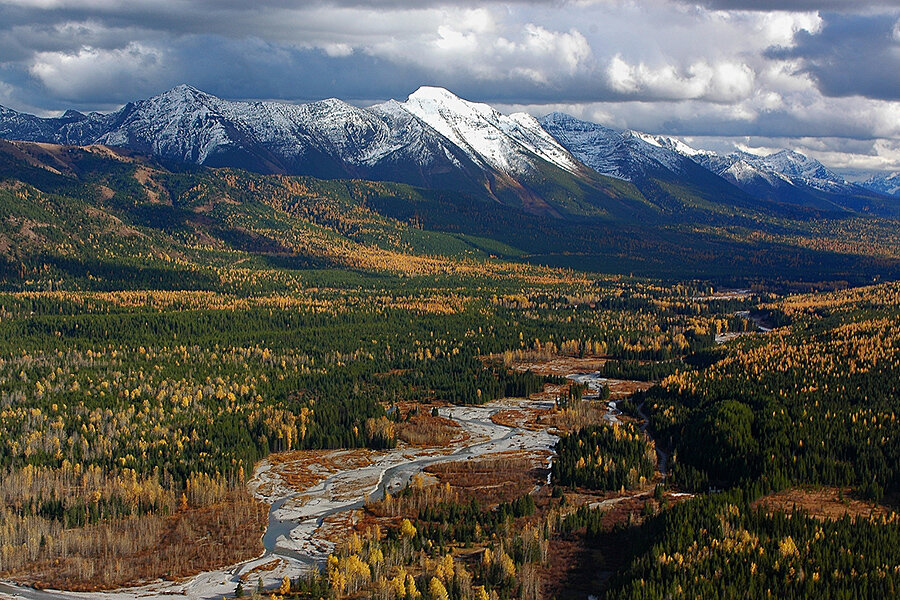Have we been missing a hidden haven of biodiversity?
Loading...
If someone asked you to list the most important kinds of ecosystem for the preservation of biodiversity, what would you say? Rainforests? Coral reefs? Wetlands?
Whatever your answer, there is one that may have slipped your mind: gravel-bed rivers. And, according to a paper published Friday in the journal Science Advances, they should probably join that list.
In considering these broad valleys that sweep from glaciated mountains the world over, the multidisciplinary team of experts, based mainly out of the University of Montana, determined that their importance in supporting a multitude of different organisms is far more substantial than their size would imply.
"A little over a year ago, in Feb. 2015, I brought together a very select group of people representing fisheries, amphibians, avian populations, big ungulate-wolf interactions, and grizzly bears," lead author Ric Hauer, director of the University of Montana's Center for Integrated Research on the Environment (CIRE), tells The Christian Science Monitor in a telephone interview.
What they found was that these gravel-bed river floodplain systems, which cover only 3 percent of the landscape in inner-mountain North America, are "by far the most important feature" in the region.
Take birds. About 240 bird species make their home in the rugged "Yellowstone to Yukon" portion of the Rocky Mountains, a region that stretches from Montana to northern Canada. Of them, more than 200 – greater than 80 percent – are directly reliant on having a viable gravel-bed river system to survive, with roughly 100 actually nesting and rearing their young in that ecosystem.
Amphibians were also found to be thriving. One of the defining characteristics of this class of vertebrate, as coauthor Winsor Lowe explains to the Monitor in a phone interview, is their need for both freshwater and terrestrial habitats (though there are a few outliers who have adapted to exist exclusively in one). With regard to the aquatic areas they inhabit, amphibians tend to be quite choosy.
"In these gravel-bed rivers, you can have the full gradient of aquatic ecosystems that amphibians rely on," says Dr. Lowe, an associate professor of ecology and evolutionary biology at the University of Montana.
While this certainly promotes myriad species to make their home here, what is perhaps most telling is the "intraspecific diversity" – a situation in which different populations of the same species have adapted to different conditions.
"This is very exciting," says Lowe, "because that's an example of very local adaptation on a very small scale."
In a different way, the gravel-bed river valleys are crucial for bigger creatures such as deer, elk, caribou, wolves, and grizzly bears, providing food, habitat, and migration corridors.
And what is it that makes these ecosystems so integral to the lives of so many animals? It is, quite simply, the complexity, the diversity, of the habitats contained, which, in turn, provides the foundation for high biodiversity: "lots of niche space for speciation," as Dr. Hauer puts it.
The gravel and cobble that constitute the valley floor are constantly being shifted by the river and its floodwaters, the river channels scoured and changed. A dazzling array of different-aged vegetation dots the landscape. Up to 50 percent of the river's water seeps underground, cleansed by the filtration of gravel and sand, imbued with the phosphorous and nitrogen naturally produced by microbes, and returning to the surface to enrich the foundations of food chains.
"If you start taking habitats away, you begin to lose the biodiversity," says Hauer.
His concerns lie in human encroachment: roads, housing, dams. Anything that changes the floodplain, that "takes away the ability of the river to flood," begins to reduce its ability to shape the landscape in the ways that sustain this spectacular array of wildlife.
"I hope this research has the same effect on others as it did on those of us working on the paper," says Lowe, "the revelation that these floodplain systems seem exceptionally important as hotspots of ecological interaction and biodiversity."








